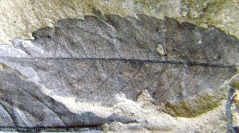

 Comptes Rendus Palevol
20 (3) - Pages 29-48
Comptes Rendus Palevol
20 (3) - Pages 29-48It is widely recognized that fossil leaves are good proxies for paleoclimate estimates, and leaf physiognomy analysis is a traditional technique used to make climate estimates. There are only a few paleoclimate reconstructions for the southern part of South America based on this technique. Here we report climate parameters using fossil leaves from the Río Turbio (Eocene-Oligocene) and Río Guillermo (Oligocene-early Miocene?) formations in southern South America, Cuenca Austral, Argentina. We used univariate (leaf margin and leaf foliar area analysis) and multivariate methods (CLAMP, DiLP) on two datasets from South America, in the Southern Hemisphere. Lower and upper members of the Río Turbio Formation show a mixed paleoflora represented by paratropical as well as cool-temperate taxa such as Nothofagus, with a similar percentage of untoothed fossil leaves. Climate estimates indicate warm and humid conditions for both Río Turbio Formation members. The Río Guillermo Formation is represented by mostly cool-temperate elements, mainly Nothofagus, and most with toothed margins. The paleoclimate analysis indicates a decrease in temperature and precipitation when comparing the two studied formations. Today, temperate forests in southern Argentina have a plant composition and climate more similar to the estimates made for the Río Guillermo Formation.
Paleoclimate, Leaf physiognomy, Temperature, Precipitation